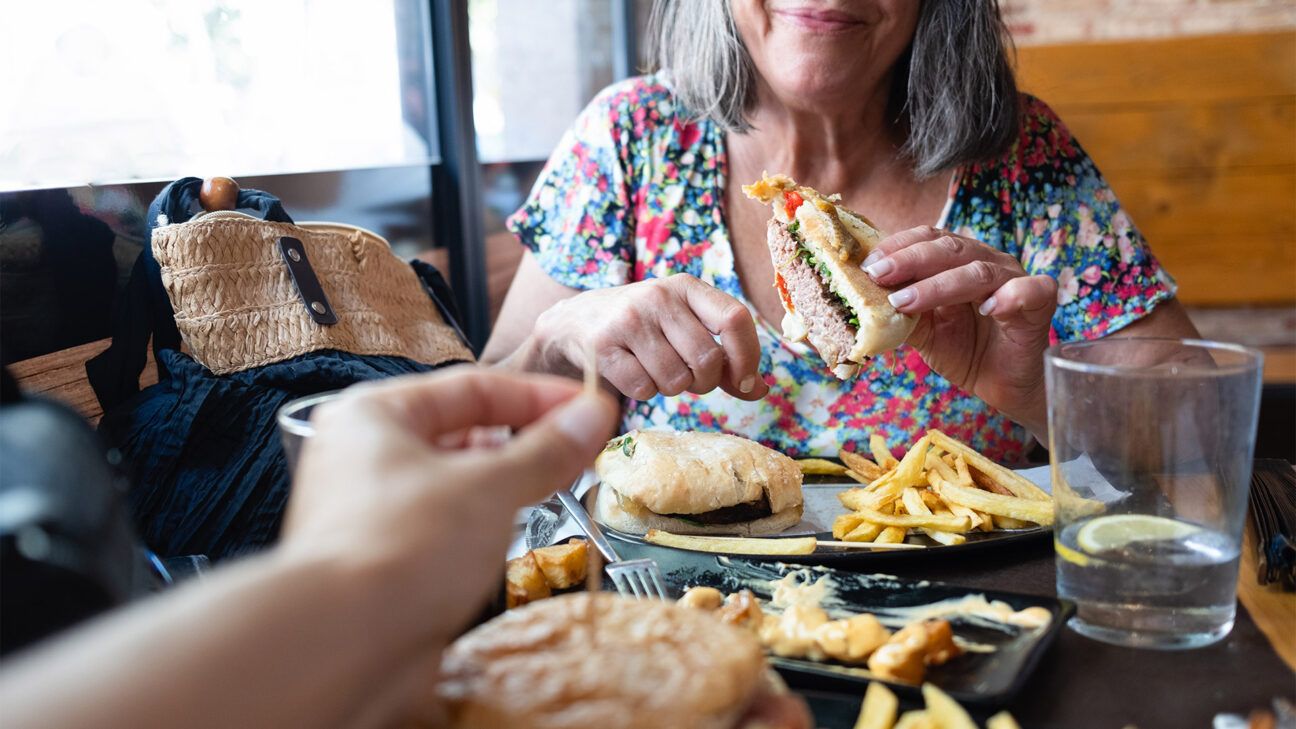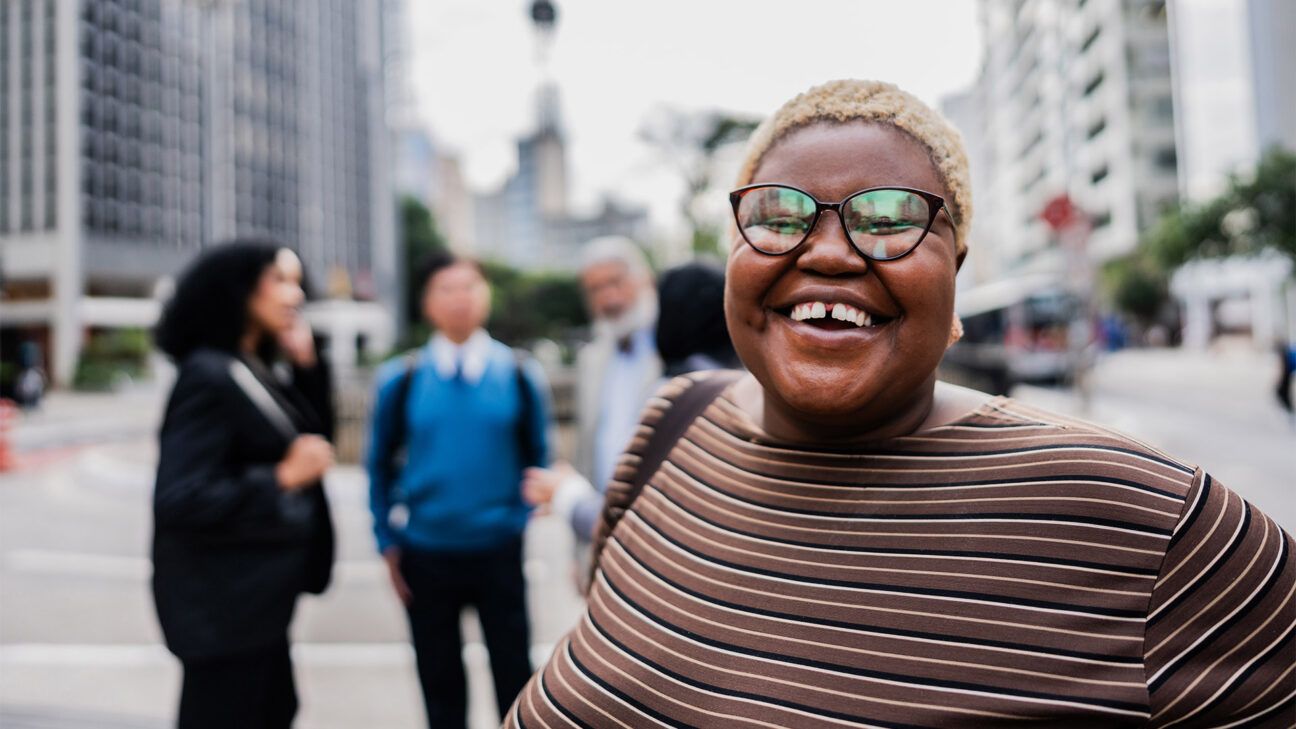This Nurse Practitioner Lost 100 lbs Taking the Weight Loss Drug Contrave

- Nurse practitioner Tim Nicaise reached 300 pounds before turning to anti-obesity medication.
- After years of trying to lose weight and improve his health, his doctor recommended Contrave.
- A year after stopping the medication, Nicaise has maintained an 85-pound weight loss.
Tim Nicaise grew up competing in gymnastics, which helped him maintain a weight of about 140 pounds for most of his life.
However, in his late 20s, he began socializing and eating out more, and in his early 30s, after becoming a dad, life stressors began to push him toward an unhealthy relationship with food. As a nurse practitioner, the pressure of caring for people also played a part, especially during the pandemic.
“Once the pandemic hit…my job really pivoted to crisis mode where I was seeing patients who were dying that shouldn’t be dying, so patients who one week or two weeks prior were walking and healthy,” Nicaise told Healthline.
“My mental health was just depleted at that time, and food became even more of a comfort for me…. you had to do whatever you could do to feel better at that point and get yourself through the day.”
In 2023, Nicaise reached 300 pounds, was prediabetic, and had sleep apnea. He was also taking three blood pressure medications.
“I didn’t even look like the same person. I hated looking in the mirror. I hated everything about myself at that point,” he said.
For the previous six years, he tried to get healthy by reading wellness books and following different diets like Weight Watchers and Keto. However, nothing worked.
“I had really damaged and altered my body so much that I needed a complete overhaul of who I was; not just diet, but exercise, mental health, setting boundaries with family,” said Nicaise.
Turning to medication
In January 2023, Nicaise’s doctor suggested he consider taking an anti-obesity medication because he was on the brink of needing a fourth blood pressure medication. At first, he was apprehensive about taking an anti-obesity medication due to stigma.
“It almost seemed like it was an easy way out, and I had failed. I am a medical professional and am not a person [who goes to] a pill for every ill situation,” he said.
Due to insurance coverage issues, Nicaise was not eligible to take a GLP-1 drug like Zepbound or Wegovy. However, he did get preauthorization from his insurance to cover Contrave, an oral combination of bupropion and naltrexone.
“Bupropion, famous by trade-name Wellbutrin for depression, is a dopamine/norepinephrine reuptake inhibitor, which increases those brain hormones in the areas of the hypothalamus which send signals to reduce appetite,” Karl Nadolsky, DO, a clinical endocrinologist and obesity specialist at Holland Hospital and clinical assistant professor of medicine at Michigan State University, told Healthline.
Naltrexone is an opioid antagonist approved for alcohol misuse disorder. Nadolsky said it blocks the negative endorphin feedback, and this blocking helps to amplify the benefits of bupropion.
“Contrave also works on the mesolimbic areas of the brain and seems to have more benefits in those who describe ‘cravings’ or ‘food addiction,’” Nadolsky said.
Differences between Contrave and GLP-1 drugs like Ozempic
There are several differences between Contrave and GLP-1 receptor agonist medications like Ozempic, Wegovy, and Zepbound.
First, the two medicines in Contrave target the pathways known to regulate mood, energy expenditure, cravings, and pleasure sensation in the brain, said Allison Rhodes, MD, dual-certified obesity medicine and internal medicine physician at The Ohio State University Wexner Medical Center.
“GLP-1 receptor agonists are incretin mimetics, a.k.a. similar copies of our own gut hormones. GLP-1 slows gastric emptying, increases release of insulin when sugar (glucose) is present, suppresses glucagon secretion and therefore liver glucose output, stimulates glucose uptake into cells, and increases proliferation of the cells in the pancreas that make insulin,” Rhodes told Healthline.
GLP-1s also increase glucose uptake and storage in muscles and decrease hunger through multiple pathways in the brain.
“Overall, these collective effects reduce food intake, increase satiety, and improve glucose metabolism, which can lead to robust weight loss,” said Rhodes.
While Contrave has no direct benefits for diabetes, Nadolsky said GLP-1s can improve pancreatic insulin secretion and glucagon inhibition of the liver.
Side effects from each may vary too, said Caroline Messer, MD, an endocrinologist at Northwell Lenox Hill Hospital.
“Contrave may cause some fatigue, anxiety, agitation, and increased risk of seizures. The side effects from GLP1s are almost exclusively gastrointestinal in nature,” she told Healthline.
However, more serious side effects have also been reported.
Contrave is typically much cheaper, and there are coupons that can make the medication affordable, Messer noted.
The way the medications are taken also varies. While Contrave is a pill that is taken twice daily, the most common forms of GLP-1s used for weight loss are subcutaneous injections given once a week.
“Naltrexone has a half-life of 5 hours, and extended-release bupropion has a half-life of 21 hours, whereas weekly dosed GLP-1 receptor agonist medications have a half-life of 7 days,” Rhodes said.
Weight loss differences between Contrave and GLP-1s like Ozempic
The average weight loss with Contrave is more modest than semaglutide or tirzepatide.
“But for those who respond early, as assessed by 5% weight loss in the first few months, average around 11% weight loss, which is very clinically meaningful,” said Nadolsky.
After six months of taking Contrave, Nicaise lost 100 pounds. In addition to taking the medication, he ate a low-carb diet and practiced intermittent fasting. He also walked every day, ensuring he reached either 20,000 steps or 10 miles.
He also continued to see a therapist he had been going to for years for additional support in his weight loss journey.
“[She helped me on how] I can mentally get myself in a better place to lose the weight and become physically more well, along with mentally more well,” said Nicaise.
He said the process of losing weight was largely connected to his mental well-being and that Contrave provided a psychological benefit.
“I would say it calmed my desire to comfort myself with food. I used to think about food all the time and snacking was a huge thing for me and it dampens that desire to reach out to food and it allowed me to find other avenues like exercise and meditation….I was replacing times that I didn’t need to eat with other activities,” he said.
Nicaise has been off Contrave for a year and has gained back 15 pounds. He has lower cholesterol, blood sugar, and blood pressure and no longer has sleep apnea. He continues to follow the same diet, and his daily walks have turned into daily runs. He also continues to see his therapist regularly.
He now takes naltrexone alone for its mental health benefits.
“My weight loss journey has changed my life like a complete 180,” he said. “I’m happier. I’m not as irritable…I feel better, and the most unexpected of the weight loss journey is honestly getting my self-esteem back and self-confidence.”
Encouraging others to begin their weight loss journey
For others who want to improve their health through weight loss, Nicaise’s biggest advice is to reject being embarrassed about how they reached their current weight and instead look forward.
“Don’t be embarrassed to talk to your doctor about it. If your doctor doesn’t want to talk to you about it, find a new doctor,” he said. “Your weight plays such a role in so many aspects of your health and once you can get that thing under control, the changes you notice in your day-to-day life are just extraordinary.”
Because every person has unique risk factors that contribute to the development of overweight and obesity, your doctor can determine which type of medication is best for you.
“Obesity is a chronic, multifactorial disease that requires a multifaceted, individualized approach to create a sustainable, adaptive plan that manages nutrition, physical activity, behavior, and selection of pharmacotherapy to optimize healthy weight loss,” said Rhodes.
This Nurse Practitioner Lost 100 lbs Taking the Weight Loss Drug Contrave Read More »









